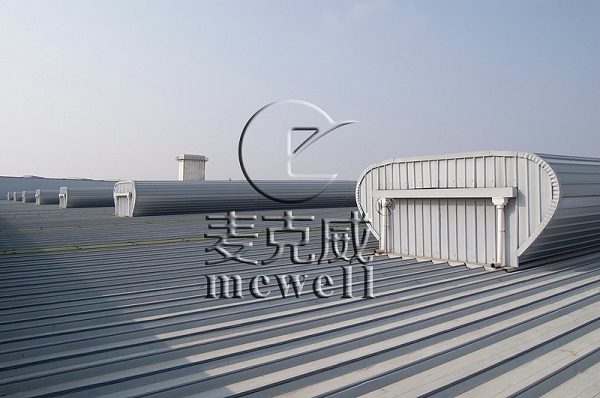- info@mcwell.cc
- +86 13881905158
- Quick Enquiry
Natural roof ventilator is mainly used for building ventilation and exhaust, especially modern large steel structure buildings. Due to the large area of the single unit, Only relying on doors and windows for ventilation cannot meet the ventilation needs. Therefore, roof vents have been widely used in large industrial buildings.
When users choose natural ventilator, need to consider these factors:
1. Waterproof performance of the ventilator
The waterproof performance of smoke vents used in roof systems is an important performance index. The full-structure waterproof ridge vents launched by Mcwell adopts full-structure waterproof patented technology, which can guarantee the waterproof performance to the maximum extent to meet the owner's requirements, and avoid silicone and tape caulking, leaking, aging and cracking.
2. Consider the building height, area
The higher the construction height of the building, the greater the wind pressure value, and the greater the ventilation of the room in the location; the smaller the building area, the greater the number of people, and the greater the amount of ventilation; the use of the room is different from the number of people. Then the demand for fresh air volume is also different. For example, for buildings with more pollution sources, the greater the number of people, the greater the demand for fresh air. Different construction factors require different specifications of ventilators. For buildings that require a relatively large amount of exhaust air, roof smoke vent with a higher ventilation frequency are required.
3. Consider the local climatic conditions
There are three working principles of natural ventilator: hot pressure ventilation, wind pressure ventilation, and interaction of heat pressure and wind pressure ventilation. Hot-pressure ventilation is due to the difference in air temperature, which leads to differences in air density. Under the action of the earth's gravity, high-temperature air moves upwards and low-temperature air moves downwards. Wind pressure ventilation refers to the wind pressure caused by the wind outside the factory building to promote air flow, forming the power of air exchange inside and outside the factory building. Different regions have diversified
climatic conditions, and the effects of heat pressure and wind pressure will vary from place to place.

